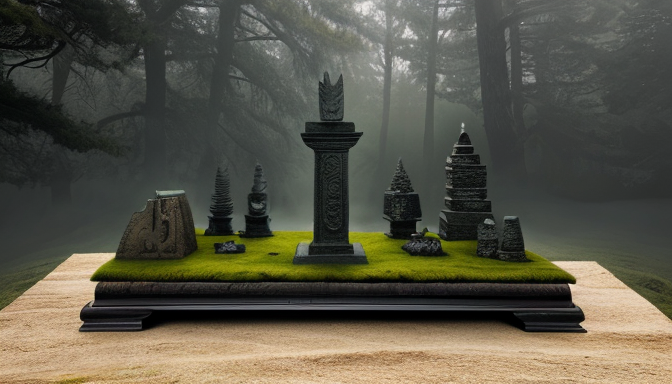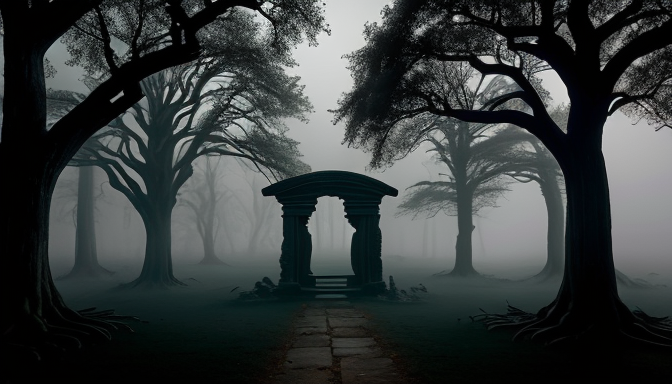Legends have a way of sticking with us, don’t they? These ancient tales, steeped in mystery and rich with cultural significance, have been passed down through generations, captivating our imaginations and haunting our dreams. From the eerie whispers of ghostly apparitions to the chilling tales of ancient gods and mythical creatures, these stories resonate with our deepest fears and curiosities. They serve as a mirror reflecting the values, beliefs, and societal norms of the time they originated in.
Take, for instance, the myths of ancient Greece. The pantheon of gods and goddesses, each with their own intricate stories, not only entertained but also taught moral lessons. These legends were often cautionary tales, warning of the consequences of hubris or the importance of humility. Similarly, in ancient Egypt, stories of the afterlife and the gods guarding it shaped the way people viewed death and the journey beyond.
But why do these legends still matter today? Well, they offer us a glimpse into the human experience, transcending time and culture. In a world where we often feel disconnected, these ancient narratives provide a sense of continuity and belonging. They remind us that, despite the centuries that separate us, the fundamental questions about life, death, and morality remain unchanged. So, the next time you hear a ghost story or watch a film inspired by ancient myths, remember that you’re not just experiencing entertainment; you’re engaging with the echoes of our shared past.
The Origins of Haunting Legends
Have you ever wondered where those spine-chilling stories we hear today actually come from? Haunting legends have roots that dig deep into our collective past, often sprouting from the fertile soil of ancient myths and cultural beliefs. These tales weren’t just told for entertainment; they served a purpose, acting as cautionary tales or moral lessons that reflected the fears and values of the societies that created them. For instance, many cultures have myths surrounding the afterlife, which often include spirits that linger among the living, reminding us of our mortality and the consequences of our actions.
In ancient Greece, the myth of Hades illustrated the fear of death and the unknown. Similarly, in Norse mythology, the Valkyries would choose fallen warriors to take to Valhalla, embodying both honor and the terrifying reality of battle. These stories were not just tales; they were woven into the very fabric of society, influencing everything from rituals to daily life.
Moreover, these legends have often been linked to natural phenomena, like storms or earthquakes, which ancient peoples could not explain. For example, the Japanese Yurei are believed to be spirits of those who died suddenly or violently, serving as a reminder of the chaos that life can bring. As we explore these origins, we find that they are not only fascinating but also reflect the universal human experience of grappling with the unknown.

Modern Interpretations and Adaptations
When we think about ancient legends, it’s fascinating to see how these stories have been woven into the fabric of modern culture. Imagine walking through a bustling city, and suddenly, a tale from centuries ago whispers in your ear. Today, these myths and legends have been reinterpreted in countless ways, from blockbuster films to bestselling novels, each adaptation breathing new life into the age-old narratives.
Take, for instance, the way ancient pantheons have inspired contemporary fantasy worlds. Authors like J.K. Rowling and Rick Riordan have skillfully integrated gods and mythical creatures into their stories, making them relatable to a new generation. In Harry Potter, the influence of folklore is palpable, while The Percy Jackson series directly pulls from Greek mythology, introducing readers to characters like Zeus and Poseidon in a fresh, engaging manner.
Moreover, modern adaptations often explore deeper themes that resonate with today’s audience. They tackle issues like identity, morality, and the human condition, all while staying true to the essence of the original legends. This connection can be seen in films like Pan’s Labyrinth, where ancient Spanish folklore is used to comment on the brutality of war, blending fantasy and harsh reality in a way that captivates and haunts.
In this way, ancient stories are not merely relics of the past; they are living narratives that continue to evolve. They remind us that our fears, hopes, and dreams have remained remarkably consistent throughout time. So, the next time you dive into a modern adaptation, remember—you’re not just enjoying a story; you’re connecting with centuries of human experience.
Frequently Asked Questions
- What are some examples of ancient legends that still resonate today?
Many ancient legends, like the tale of Dracula or the Legend of the Headless Horseman, continue to captivate audiences. These stories have evolved but retain their core themes of fear and the supernatural, making them timeless.
- How have these legends influenced modern culture?
Ancient legends have deeply influenced modern literature, films, and even video games. They serve as a foundation for storytelling, allowing creators to explore themes of good vs. evil, morality, and the unknown, which resonate with contemporary audiences.
- Why do we still tell these stories?
We share these haunting tales because they tap into our primal fears and curiosities. They connect us to our ancestors, offering insights into their lives and beliefs, while also providing thrilling entertainment that sparks our imagination.
- Are these legends based on real events?
Many ancient legends are rooted in real events or figures, often exaggerated over time. This blend of fact and fiction creates a rich tapestry of storytelling that keeps us intrigued and questioning what might be true.

Recent Comments